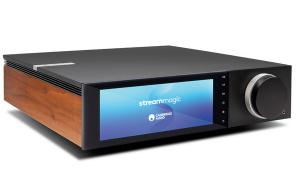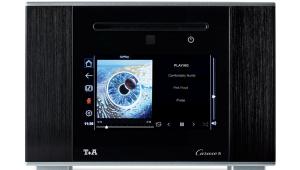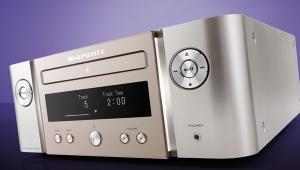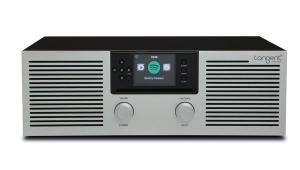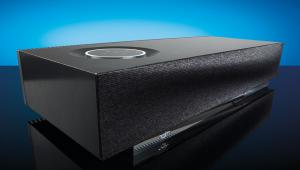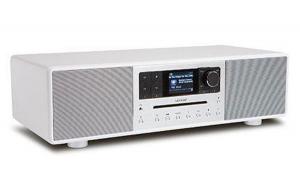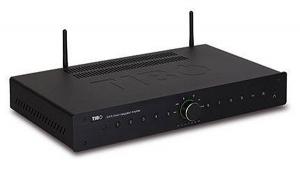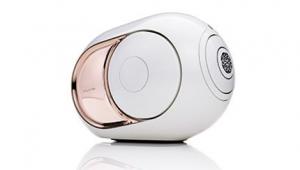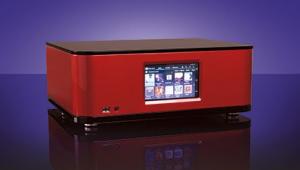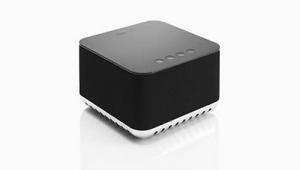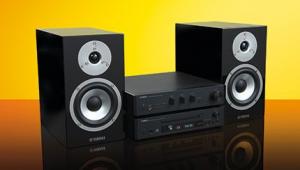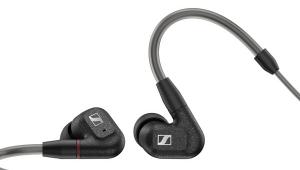Cary Audio AiOS
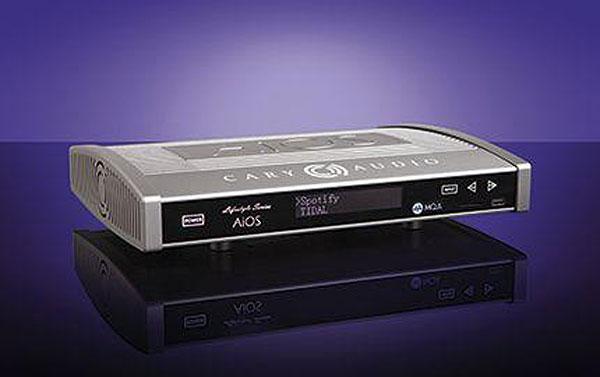
 A new kind of music system for a new generation”, it says here. Well, in truth the AiOS isn’t that different to other all-in-ones I have reviewed over the years, but it’s still an interesting proposition at its price. Billy Wright, the President of Cary Audio, says that he hopes both audiophiles and young people will look at the AiOS with interest. “By reaching the younger generation of music lovers, we want to introduce them to the appeal of higher performance playback.” It’s certainly a laudable aim, as is offering older people downsizing from large separates systems a respectable route to something smaller. “Actually AiOS appeals to a variety of music lovers and audiophiles alike for various reasons,” he adds.
A new kind of music system for a new generation”, it says here. Well, in truth the AiOS isn’t that different to other all-in-ones I have reviewed over the years, but it’s still an interesting proposition at its price. Billy Wright, the President of Cary Audio, says that he hopes both audiophiles and young people will look at the AiOS with interest. “By reaching the younger generation of music lovers, we want to introduce them to the appeal of higher performance playback.” It’s certainly a laudable aim, as is offering older people downsizing from large separates systems a respectable route to something smaller. “Actually AiOS appeals to a variety of music lovers and audiophiles alike for various reasons,” he adds.
Look closely and it is clear the company has made an effort to lift the AiOS into proper hi-fi territory. The power amplifier section boasts 75W RMS per channel into 8ohm – and, unexpectedly for something so petite, it doesn’t use Class D power modules, but Class AB MOSFETs. There’s a welter of facilities on top of this, centred around the AKM4490EQ, the same DAC chip used in its reference DMS-500 network player. As an aside, I have never heard a poor-sounding DAC or CD player with this fitted. An in-house designed streaming platform is used. “We don’t believe in using off-the-shelf solutions by third-party vendors,” says Wright. “We have the engineering prowess to do so whereas many competitors don’t, hence why they use third party platforms…”
The AiOS can function as a DAC, but most will hook it up to their home networks via wi-fi or Ethernet, whereupon it can stream digital music from a NAS drive or similar. It also gives access to integrated internet music streaming services such as Spotify and Tidal, and is Roon-ready. It can play music off an SD card via a front panel slot, or a USB flash drive or USB hard drive. It has Bluetooth – the latest aptX implementation – and it’s done really well. You can beam music from your iPhone or similar to the unit, and it will play through the loudspeakers or send any of its selected sources to Bluetooth-enabled headphones or speakers for a completely wireless music system. Another useful feature is the MQA certification, which is a handy feature to have for the future.
A product such as this has to look good and be pleasing to use, or it is nothing. Cary Audio has taken real effort here. I particularly like the unit’s compact size and the gently curved form of its high-quality aluminium casework. The large Cary Audio lettering on top is less pleasing to my eyes, and the front of the unit is spoilt by the quality of the backlit LC display. This is inset into the front fascia and is a pretty crude scrolling dot-matrix affair. On the plus side, it’s reasonably easy to read from a distance, but compared with the sharper, brighter, fine-pitch OLEDs now appearing, it looks dated. At least it’s informative, though, telling you the resolution of the digital files that you’re playing. Interestingly, there’s the option of changing the colour of the display and backlit touch keys; there are six presets or you can adjust them to any colour of the rainbow. Cary Audio thoughtfully offers five additional side panel colour options, too.
I find it quite nice to use, aside from the aforementioned display. The remote control is a quality item and gives fast access to its various inputs, and there’s a handy app that comes in both iOS and Android flavours. The rear panel is packed with socketry, showing just what a versatile beastie this is – there’s a coaxial, optical and three USB-A ins; a sub out, Bluetooth in and out, SD card in and three RCA line inputs. A preamplifier output, headphone output and 12VDC trigger complete the connectivity package. Apart from vacuum tubes popping out of the top, frankly it’s hard to think of a feature it hasn’t got.
Sound quality
I may have some reservations about the ergonomics of the AiOS, but there is nothing to complain about, in the way it plays music. This is an extremely nice sounding one-box system, with an audio quality that totally belies its small size and modest price. It delivers a big, bold and vibrant sound, yet is a long way from being uncouth. Indeed, it’s surprisingly polished, subtle and detailed in the way it plays even plain vanilla Red Book CD from a disc transport. Even the Bluetooth sounds great. Whatever input you choose, there is power, musicality and poise – plus a pleasingly fulsome tonal balance, too. It’s quite easy to confuse this for a full-sized hi-fi separate, so good is it.
For example, Wings’ London Town is a silky smooth recording from the late seventies, done at Abbey Road under the watchful eye of George Martin. On a poor system it can sound flat and lacklustre, because the recording itself is so butter-smooth. Via the Cary system, however, the result is vivid yet fulsome. The most striking thing is the vast soundstage; it’s far wider left to right than I would expect from such a device, and not only that, images are located with surprising precision within the recorded acoustic. True, depth perspective isn’t quite up with serious high end hi-fi, but the expansive soundstaging more than compensates and the result is a broad, room-filling performance that beams effortlessly out of the loudspeakers. There’s never the sense that the music is being squeezed through a toothpaste tube, as the mix always sounds big and gutsy.
This makes Haircut 100’s Lemon Firebrigade a joy too. This is a jaunty bit of early eighties funk that breezes along in a carefree way on a good system. It’s not quite as warm tonally as London Town, but still has a nice ‘amber’ coloured tone to it – which is often turned to grey by modern lifestyle systems. Not here, though – the AiOS conveys the warmth of the recording along with the natural lustre of the brass arrangements. It’s not a hugely transparent sound – there’s some light bass bloom and the upper mid lacks real forensic insight, yet the overall effect is lovely. It makes for a cosseting sound that’s ideal for more budget-oriented loudspeakers. I am also struck by how natural and believable the vocals are; the Cary makes the singer sound like a real, tangible person rather than simply a sound effects plug-in on a sampler.
All good so far, but this system’s real talent is its handling of rhythms, and the AiOS delivers a really bouncy and engaging sound. Yes, the aforementioned bass warmth does in effect gently slur bass guitar lines – but still the Cary manages to sound lithe and nimble across all sources, whether you’re streaming a hi-res FLAC of Herbie Hancock’s Rock It, Dire Straits’ Sultans Of Swing on MQA or playing an AAC version of the Beach Boys’ California Girls via the Bluetooth input. Although you don’t quite get the Naim Uniti Star’s fixation with the leading edges of notes (HFC 433), this is still a fast and zesty performer and it really captures the spirit of the music. By the way, Bluetooth sounds far better than some I have heard, and makes for a very listenable music source if you simply want to play out tunes from your smartphone. Indeed, the Cary AiOS has a big heart that’s not immediately apparent simply by looking at it – it makes music fun, and really gets into the rhythmic groove. At the same time, it’s clean enough and possessed of sufficient power to really capitalise on this. The result is a fast, propulsive sound that makes music a pleasure to hear, again and again, and you need to pinch yourself to remember that it’s a modestly priced ‘style system’.
Putting on a pretty thin eighties recording such as Chris Rea’s On The Beach, there’s a sense of the upper midband sounding a teensy bit chromium-plated. Yet this bit of kit never grates or leaves you feeling tired, even after long listening sessions at highish volume levels. The slight looseness in the low bass actually gives a pleasingly euphonic effect, while that widescreen soundstaging takes one’s mind off the slight lack of depth perspective. It’s got oodles of power, which should suffice for most applications – but put a difficult load on the end of the AiOS and turn the volume right up, and there’s a sense of it needing to catch its breath a little. This is nothing more than a timely reminder of the fact that you’re not listening to something that costs twice the price.
Conclusion
While I’m not totally won over by the ergonomics and styling details of Cary Audio’s AiOS system, there’s no denying that it makes a great sound at the price. Factor in its excellent connectivity, compatibility and feature set that should see it working long into the future, and it’s hard not to like. DP
DETAILS
Product: Cary Audio AiOS
Price: £2,725
Origin: USA
Type: One-box system
Weight: 6.8kg
Dimensions: (WxHxD) 360 x 166 x 280mm
FEATURES
● UPnP streaming; aptX Bluetooth
●32-bit/384kHz and DSD512-capable DAC
●Quoted power output: 2x 75W RMS (8ohm)
●Inputs: 3x RCAs; 1x coaxial; 1x optical; 3x USB; 1x 3.5mm jack
Distributor: Cary Audio Europe
Telephone: +37 28803580
Website: caryaudio.eu
Read the full review in June issue 437
 |
Inside this month's issue:
Q Acoustics 3020c standmount loudspeakers, Perlisten R10s active subwoofer, Quad 33 and 303 pre/power amps, Acoustic Solid Vintage Full Exclusive turntable, newcomer Fell Audio Fell Amp and Fell Disc and lots, lots more...
|

